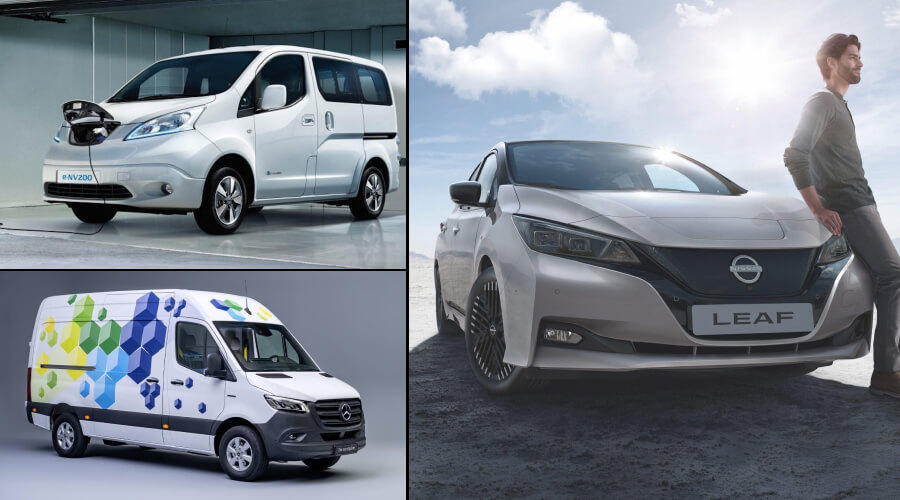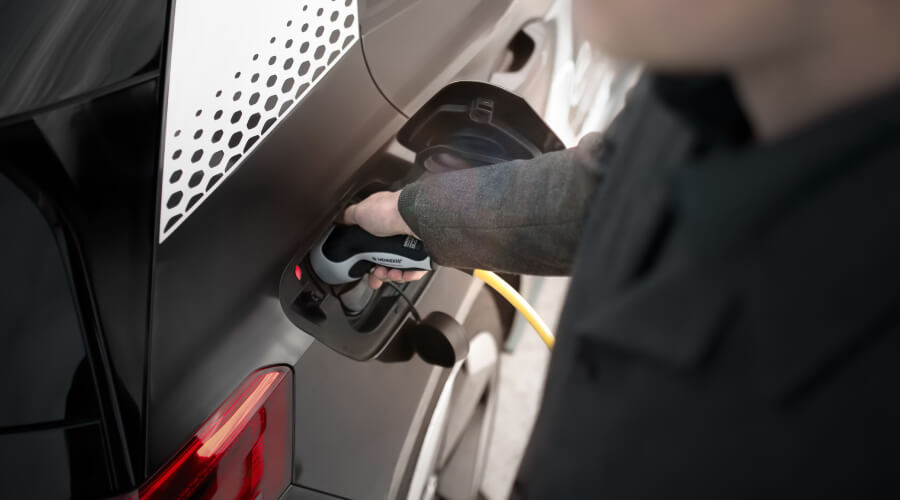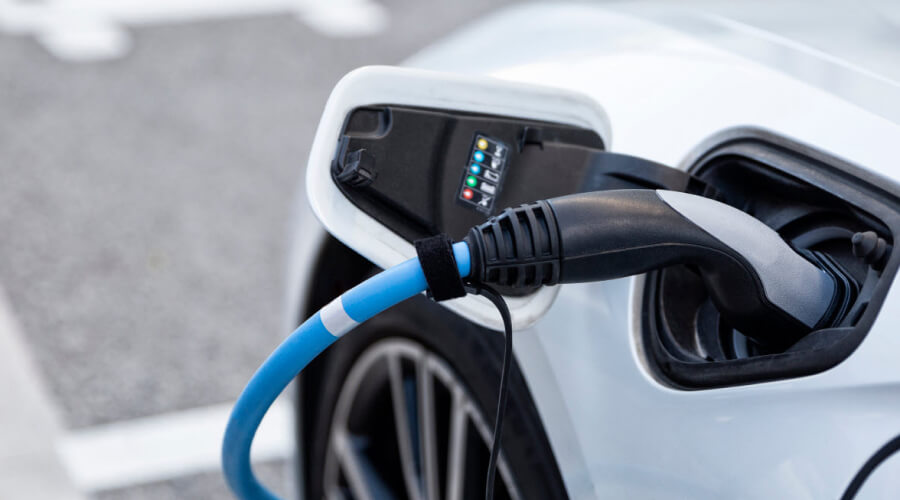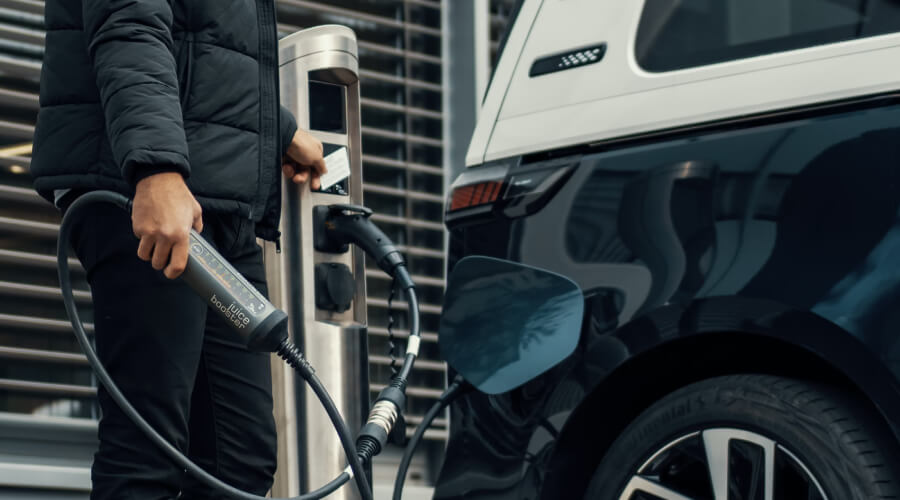Everything You Need to Know About Australia’s Public EV Charging Networks (2024)
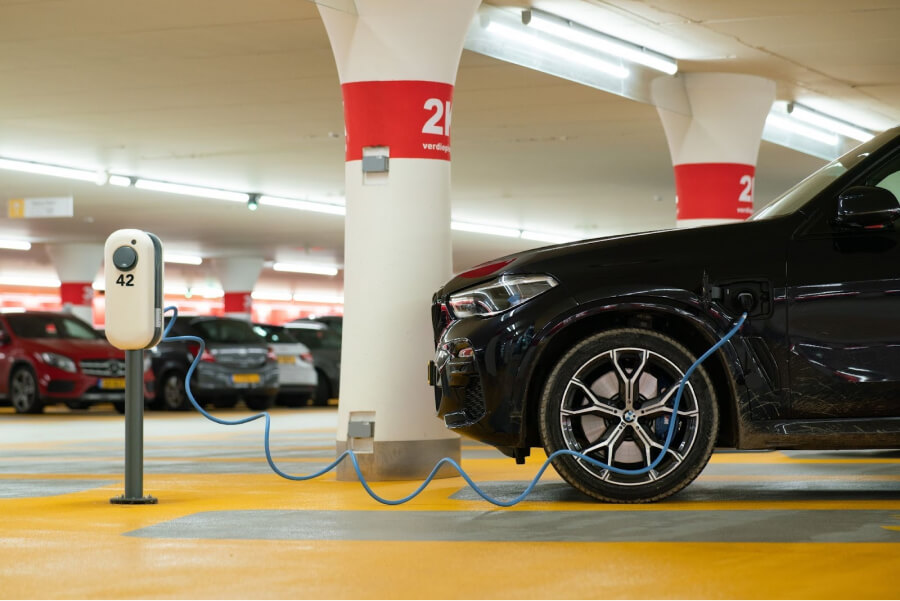
In this article:
When it comes to charging your electric vehicle (EV) in Australia, it’s important to know the major charging networks out there. Australia’s EV charging networks vary widely in terms of availability, charging cost, charging speed and tech features. Here’s what you need to know about public EV charging networks in Australia, including the major players, fastest charging networks, charging growth & investment and more.
Major EV Charging Networks in Australia
| Networks | DC fast chargers | AC destination chargers (slow charging) | Locations |
| Chargefox | Yes | Yes | Over 1,000 plugs at more than 350 locations nationwide (plus 22 ultra-rapid site locations). |
| Tesla | Yes | Yes | Over 400 Supercharger stations and 500+ Destination sites. |
| BP Pulse (BP) | Yes | No | Over 100, with the goal to have 600 EV charge points across Australia by the end of 2025. |
| NRMA | Yes | Yes | Over 100 charging stations. |
| Evie Networks | Yes | No | More than 80 locations; plans for over 300 stations by end of 2024. |
| AmpCharge (Ampol) | Yes | No | Around 120 stations, expanding to over 200 sites by the end of 2024. |
| Jolt | Yes | No | Around 50 stations. |
| Exploren | Yes | Yes | Approximately 50 charging stations nationwide. |
Note:
When we talk about the number of charging stations each network has – we’re talking about the location. A charging station location might have anywhere from one to a dozen or more individual chargers. So, even if two networks have a similar number of locations, one might have a lot more charging plugs available for EV drivers to use.
Another thing to remember is that the EV charging scene in Australia is changing really quickly. New charging spots are popping up all the time, so it can be tricky to get an exact count at any given moment. The numbers we’ve got here are based on checking out news articles and looking at what each charging network has to say on their own websites. But even then, it’s hard to keep up with all the latest developments.
So, while these figures give us a good idea of how the different networks compare, they’re more like a snapshot in time (April 2024, to be precise). The reality is that the EV charging landscape is constantly evolving, and networks are always working on expanding their coverage to make it easier for EV owners to stay charged up.
EV Charging Sites – State-by-State Comparison
| State | Charging Sites | Key Info |
| New South Wales (NSW) | 490+ | NSW is the most EV-friendly state, with significant infrastructure from Tesla and NRMA. |
| Victoria | 430+ | Victoria has a considerable number of Evie charging stations, primarily in Melbourne. |
| South Australia (SA) | 420+ | Chargefox constitutes the majority of these sites. The state is actively investing in expanding its EV infrastructure. |
| Queensland | 260+ | Queensland is enhancing its EV-friendly status by planning significant investments in public EV charging infrastructure. |
| Western Australia (WA) | 185+ | WA is reported to be developing a large fast-charging network to address infrastructure concerns among residents. |
| Australian Capital Territory (ACT) | 160+ | ACT leads in EV market share and is expanding public charger availability through significant funding. |
| Tasmania | 120+ | Tasmania is focusing on increasing public charging facilities through government funding and schemes. |
| Northern Territory (NT) | 60+ | The NT is set to increase its number of fast-charging sites through federal and state funding initiatives. |
(Source)
Understanding Charging Costs and Pricing
Pricing at EV charging sites are determined by a few factors. Here’s an overview of how these costs are generally calculated:
- Type of Charger: Charging costs can vary significantly based on the type of charger. Faster chargers like DC fast chargers typically cost more to operate and may be more expensive compared to slower AC chargers.
- Pricing Models: Different charging networks may use different pricing models. Some common models include:
- Per kWh: This model charges users based on the amount of electricity (in kilowatt-hours). It’s similar to paying for the amount of petrol in ICE cars and is influenced by local electricity rates.
- Per Minute: Some networks charge based on the time connected to the charger, regardless of the amount of electricity delivered. This can sometimes benefit vehicles that charge faster.
- Flat Fee: Occasionally, a charging station might offer a flat rate for a charging session or for a set amount of charging time.
- Local Energy Prices: The cost of electricity in the area where the charging station is located also affects charging prices. Areas with higher electricity costs may see higher charging fees.
- Network Membership and Discounts: Some charging networks offer memberships that can provide lower charging costs or other benefits. Discounts might also be available for members of certain groups or through promotional offers.
- Demand Pricing: In some cases, pricing may vary by the time of day or the current demand on the grid or charging network. Referred to as ‘demand response pricing’, helps manage load on the electrical grid.
So as you can see, the cost of EV charging in public can vary widely. In most cases, public charging stations will display their pricing structure clearly, and many EV navigation apps will provide cost estimates for charging sessions at different locations.
Transitioning to EV Fleets: 9 Things Australian Businesses Need to Know
Electric vehicles (EVs) are fast becoming a common sight on Australian roads. It’s not just a trend driven by environmental concerns; businesses are seeing the real-world benefits of integrating EVs into their operations. From potential long-term cost savings to aligning with sustainability goals and preparing for future regulatory changes, there’s a compelling case for going …
Read morePublic Charging Costs (Ranked from Cheapest to Most Expensive)
AC Charging (Up to 22 kW)
- Tesla: Free for Destination AC chargers
- Exploren: 0–50c/kWh depending on various factors
- Evie Network: 50c/kWh
- EVup: 0–55c/kWh
- Chargefox: 0–60c/kWh
Fast DC Charging (75–120 kW)
- Chargefox: 25–65c/kWh for 75 kW, 45–60c/kWh for 120 kW
- Evie Network: 40–58c/kWh for 75 kW
- BP Pulse: 45–60c/kWh for 75 kW
- AmpCharge: 69c/kWh for 100 kW, 60–69c/kWh for 120 kW
- Exploren: 69–80c/kWh for 120 kW
Ultra-rapid Charging (150 kW and Above)
- NRMA: 54c/kWh for members, 60c/kWh for non-members for 150 kW
- BP Pulse: 60c/kWh for 150 kW
- Chargefox: 59–68c/kWh for 150 kW
- Evie Network: 68c/kWh for 150 kW
- Tesla Supercharger: 60–85c/kWh for 250 kW
Ultra-rapid Charging (350 kW)
- Chargefox: 60c/kWh
- Evie Network: 73c/kWh
Note:
Charging Speeds Across Networks
In Australia, there are three main types of EV chargers that give you different amounts of range, depending on your car’s battery. Most EVs in Australia have a plug that works with at least one of these charger types, but Tesla has its own special plug and charging stations that only work with their cars.
- Level 1/Mode 2 (Slow Charging): This is the slowest type of charging, and you can do it at home using a regular powerpoint. It gives you about 10 to 20 km of range per hour, which is enough for a daily top-up, but not a full overnight charge.
- Level 2/Mode 3 (Fast Charging): These chargers are faster and are usually found in homes, apartments, workplaces, shopping centres, or hotels. They can add 40 to 100 km of range per hour, which is good for daily top-ups and full overnight charges.
- Level 3/Mode 4 (Rapid Charging): These are the fastest chargers and are usually in commercial areas and along roadsides. The lower-powered ones can add up to 150 km of range per hour, while the high-powered ones can fully charge an EV in just 10 to 15 minutes. These are super quick, but they can also be the most expensive to use.
Popular EV Network Charging Speeds Overview
| Charging Network | Types of Charging Offered | Charging Speed (kW) | Cost per kWh | Additional Notes |
| Chargefox | Slow, Fast, Ultrafast | 4 – 350 | Varies by location | Fees vary; check the mobile app for specific rates. |
| Evie Networks | Fast, Ultrafast | 50 – 350 | $0.40 to $0.60 | Offers primarily fast and ultrafast charging options. |
| Tesla Supercharger | Fast, Ultrafast | 120 – 250 | Varies by location | Exclusively for Tesla vehicles; fee varies by usage. |
| Jolt | Fast | 25 – 50 | Varies; first 7 kWh free | Primarily offers 25 kW fast chargers. |
| AmpCharge | Fast | 150 | $0.69 | Located at Ampol stations; powered by green energy. |
TLDR:
- Chargefox offers a range of charging speeds, from slow to ultrafast, making it versatile for different charging needs.
- Evie Networks focuses on fast to ultrafast charging, suitable for quick top-ups.
- Tesla Supercharger Network provides fast charging options exclusively for Tesla models.
- Jolt offers fast charging with a unique feature where the first 7 kWh are free.
- AmpCharge provides fast charging at a flat rate, emphasising its commitment to green energy.
The Best Electric Vehicles for Business Fleets
As businesses shift towards sustainability, choosing the right electric vehicle (EV) for your fleet can be a game-changer. As we move towards a greener future, businesses are hopping on the electric vehicle (EV) bandwagon. Whether it’s for sustainability, economic benefits, or both, there’s an EV out there to match your business needs. Here, we outline …
Read moreHow the Charging Networks Differ (Business Models)
The major Australian EV charging networks have all adopted different business models and strategies when it comes to choosing locations for their charging stations. These differences reflect their target markets and goals in supporting the growth of electric vehicles across the country.
Chargefox
- Located across a variety of urban and regional locations.
- Often found in public areas such as shopping centres and parking lots.
- Chargers are also placed along major highways to facilitate long-distance travel
Chargefox, Australia’s largest EV charging network, partners with existing businesses to install their chargers, helping these hosts attract and retain customers. They offer a combination of ultra-rapid chargers at key locations and more widely distributed fast chargers, primarily along travel routes and in urban areas, to provide convenient charging options for a wide range of EV users.
Evie
- Chargers are installed in high-traffic areas including shopping centres.
- Positioned along major highways, supporting intercity travel.
- Evie also targets commercial spaces and councils, offering tailored charging solutions
Evie Networks focuses on promoting sustainability and renewable energy. They operate fast and ultra-fast charging stations across Australia, catering not only to the public but also offering customised solutions for businesses, councils, and commercial fleets. Evie Networks strategically places their chargers in high-traffic locations like shopping centres and along major highways to ensure accessibility and convenience.
Tesla
- Primarily found along major highways for long-distance travel.
- Tesla Destination Chargers are located at destinations like hotels and shopping centres where longer parking is expected.
- Urban and some regional centres, though less common compared to other networks
Tesla’s Supercharger Network is exclusive to Tesla vehicles and boasts some of the fastest charging speeds available. Tesla Superchargers are located along major highways and in urban centres, although they are less widespread compared to other networks. Additionally, Tesla provides Destination Chargers at hotels and shopping centres, which are slower and intended for longer stays.
Jolt
- Focused on urban areas, particularly in Sydney, Melbourne, Adelaide, and Brisbane.
- Commonly located in public parking areas, making them accessible for daily commuters and city visitors.
Jolt primarily targets urban areas such as Sydney and Melbourne, offering fast charging and promoting the first few kWh of charging as free. This makes it an appealing choice for city residents and commuters. Jolt chargers are frequently found in easily accessible public areas like parking lots.
AmpCharge
- Installed at Ampol fuel stations, combining traditional fueling and electric charging options.
- Found across various states, located at convenient roadside stops.
- Targets existing customers of Ampol who might be transitioning to or using electric vehicles.
AmpCharge, an initiative by Ampol, installed their chargers at Ampol fuel stations, providing a convenient transition point for traditional fuel customers to switch to electric vehicles. Their fast chargers are powered by green energy, aligning with broader environmental objectives.
EV Charging Stations Projected Growth and Investment
The number of EV charging stations is expected to double this year, continuing the impressive growth from last year. According to a report by Next System, the expansion of charging sites increased by a whopping 90% in 2023.
Here’s what’s happening:
- Chargefox is leading the pack by providing the most charging stations, holding over a third of the market. This is despite Tesla dominating EV sales.
- 2023 was a landmark year with nearly 400 new charging sites popping up and over 750 new charging points installed.
- Looking ahead to 2024, the forecast looks even brighter. We’re expecting another 870 new sites, which could bring the total to over 1,600 by the end of the year.
This surge is outpacing the growth of EV ownership itself, which is great news for those worried about finding places to charge. Chargefox, Evie Networks, and Tesla are the major players, but others like Jolt, NRMA, and even petrol giants like BP and Ampol are getting into the game, expanding their networks rapidly.
With over 87,000 electric cars sold in 2023—more than double from the previous year—it’s clear that the demand for EVs is growing. And with this demand, the infrastructure is catching up, making it easier for Australians to consider making the switch to electric. This growth is crucial as the availability of charging stations has been a major concern for potential buyers, second only to the cost of EVs themselves.
Top 5 Fastest Charging Sites in Australia
| Provider | Max Charging Speed (kW) | Common Locations |
| Chargefox | 350 | Urban areas, highways, and retail locations like shopping centres. |
| Evie Networks | 350 | Along major travel routes and commercial areas Australia-wide. |
| Tesla Superchargers | 250 | Major highways, urban areas, hotels, and shopping centres. |
| Ampol’s AmpCharge | 150 | Ampol fuel stations across various states. |
| NRMA | 175 | Predominantly in regional and urban locations throughout NSW, SA, ACT & QLD. |
Comparing Australia’s EV Charging Infrastructure Globally
Australia is definitely making strides in the electric vehicle (EV) race, but it’s not at the front of the pack yet. Here’s a breakdown of how it compares globally:
| Country | Number of Charging Stations/Points |
| United States | 64,000 + |
| China | 2.2 million + |
| Germany | 61,900 + |
| Netherlands | 58,000 + |
| Australia | 2,000 + |
Australia’s EV charging infrastructure is growing fast. While we’re not quite at the level of global leaders like the US, China, or the Netherlands yet, we’re definitely making solid progress.
Companies like Chargefox and Evie Networks are doing a great job of expanding ultra-fast charging stations in our cities and key regional areas. Plus, the government is starting to step up and provide more support for this infrastructure growth, which is crucial.
We’ve still got some work to do to catch up, but Australia is showing a strong commitment to going green with our transportation. As more Aussies switch to EVs, the demand for a reliable charging network just keeps growing.
While we might not be leading the global EV charge just yet, Australia is definitely on the right track. We’re growing fast, investing smarter, and staying committed to a greener future.
Common Criticisms of EV Charging Networks
A deep dive on Reddit shows there are some common frustrations among EV drivers when it comes to charging networks in Australia, with the most common being:
- Limited Charging Stations: Many drivers point out the lack of charging stations, particularly in rural areas, which can complicate travel plans and increase range anxiety.
- Charging Speeds: While fast chargers are available, charging an EV can still take significantly longer than refuelling a petrol car.
- Cost of Public Charging: Charging costs can vary widely, with public charging often being more expensive than home charging.
- Reliability Issues: There are frequent reports of charging stations being out of order or malfunctioning.
Compatibility Issues: The lack of standardisation in charging connectors can be frustrating, requiring drivers to carry multiple adapters or seek out compatible stations.
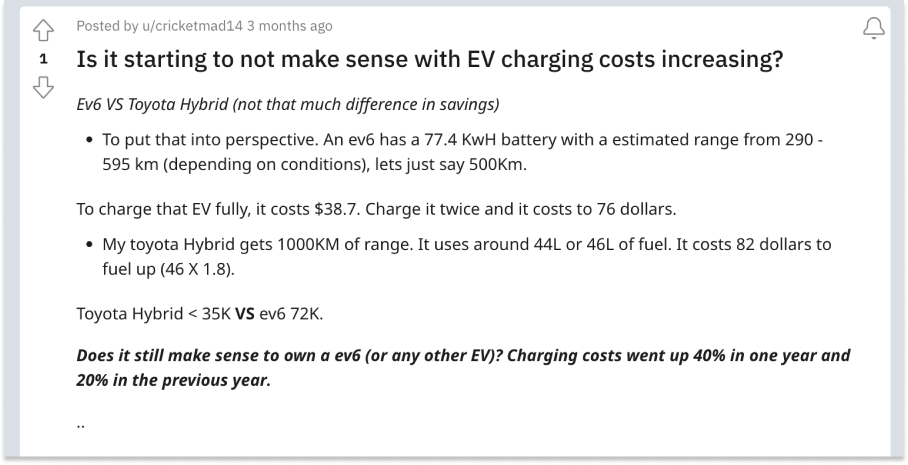
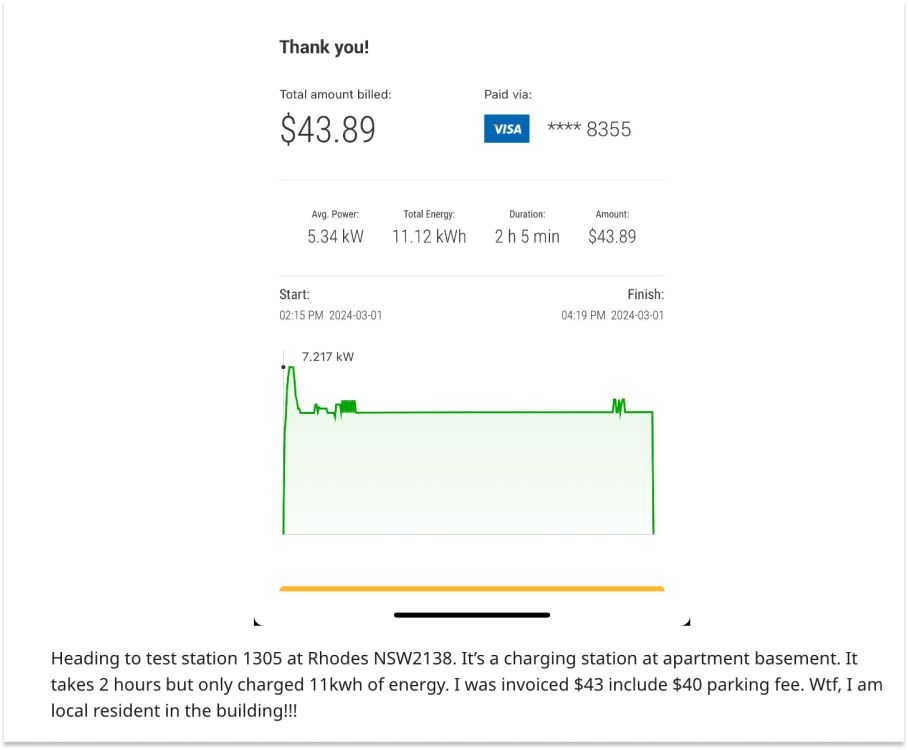


Adapters and Compatibility for Charging Sites
| Vehicle Model | Charging Plug Type | Adapter for Chargefox | Adapter for Tesla Supercharger | Adapter for Evie Networks |
| Tesla Model Y | Tesla NACS | CCS Combo 2 Adapter | None needed | CCS Combo 2 Adapter |
| BYD Atto 3 | CCS Combo 2 | None needed | Tesla to CCS Adapter | None needed |
| Tesla Model 3 | Tesla NACS | CCS Combo 2 Adapter | None needed | CCS Combo 2 Adapter |
| MG 4 | CCS Combo 2 | None needed | Tesla to CCS Adapter | None needed |
| BYD Dolphin | CCS Combo 2 | None needed | Tesla to CCS Adapter | None needed |
| Kia EV6 | CCS Combo 2 | None needed | Tesla to CCS Adapter | None needed |
| Hyundai Kona Electric | CCS Combo 2 | None needed | Tesla to CCS Adapter | None needed |
Charging Plugs / Adapters Overview
1. Type 2 (Mennekes)
- Usage: This is the most common plug type for EV charging in Australia.
- Charging Type: It supports both AC and DC charging, with AC charging typically up to 22 kW. It’s also the base for the CCS2 plug, enabling higher power DC fast charging.
- Compatibility: Used by a wide range of European and Australian EVs, including models from BMW, Mercedes, Volkswagen, and newer models from Hyundai and Renault.
2. CCS (Combined Charging System) Combo 2
- Usage: Increasingly common in Australia, especially for new EV models.
- Charging Type: The CCS Combo 2 supports high-power DC fast charging in addition to AC charging capabilities provided by the Type 2 part of the connector, with DC capabilities up to 350 kW.
- Compatibility: Adopted by most new EVs sold in Australia, excluding most Tesla models, and is favoured for its fast charging capabilities.
3. Tesla Connector
- Usage: Specific to Tesla vehicles and used at Tesla Supercharger stations.
- Charging Type: Tesla connectors support both AC and DC charging, with Superchargers offering up to 250 kW.
- Compatibility: Exclusive to Tesla vehicles, though newer models in Australia come equipped with a CCS Combo 2 port as well, to allow broader charging network compatibility.
Adapters:
- Tesla to CCS2 Adapter: Allows newer Tesla vehicles equipped with a CCS2 port to use Tesla’s Supercharger network.
- CCS1 to CCS2 Adapter: Rare but useful for vehicles imported from regions with CCS1 standards, allowing them to charge at CCS2 stations in Australia.
Public EV Charging in Australia is Upping its Game
Australia is really stepping up its game when it comes to electric vehicle charging. More charging stations are popping up across the country, making it easier for EV owners to find a spot to charge, especially with fast and ultra-fast options becoming more common. As we look ahead, the focus is on making these stations even more accessible and efficient, backed by government support and evolving technology. The future looks bright for EV drivers in Australia, with ongoing improvements set to make electric driving smoother and more convenient.


